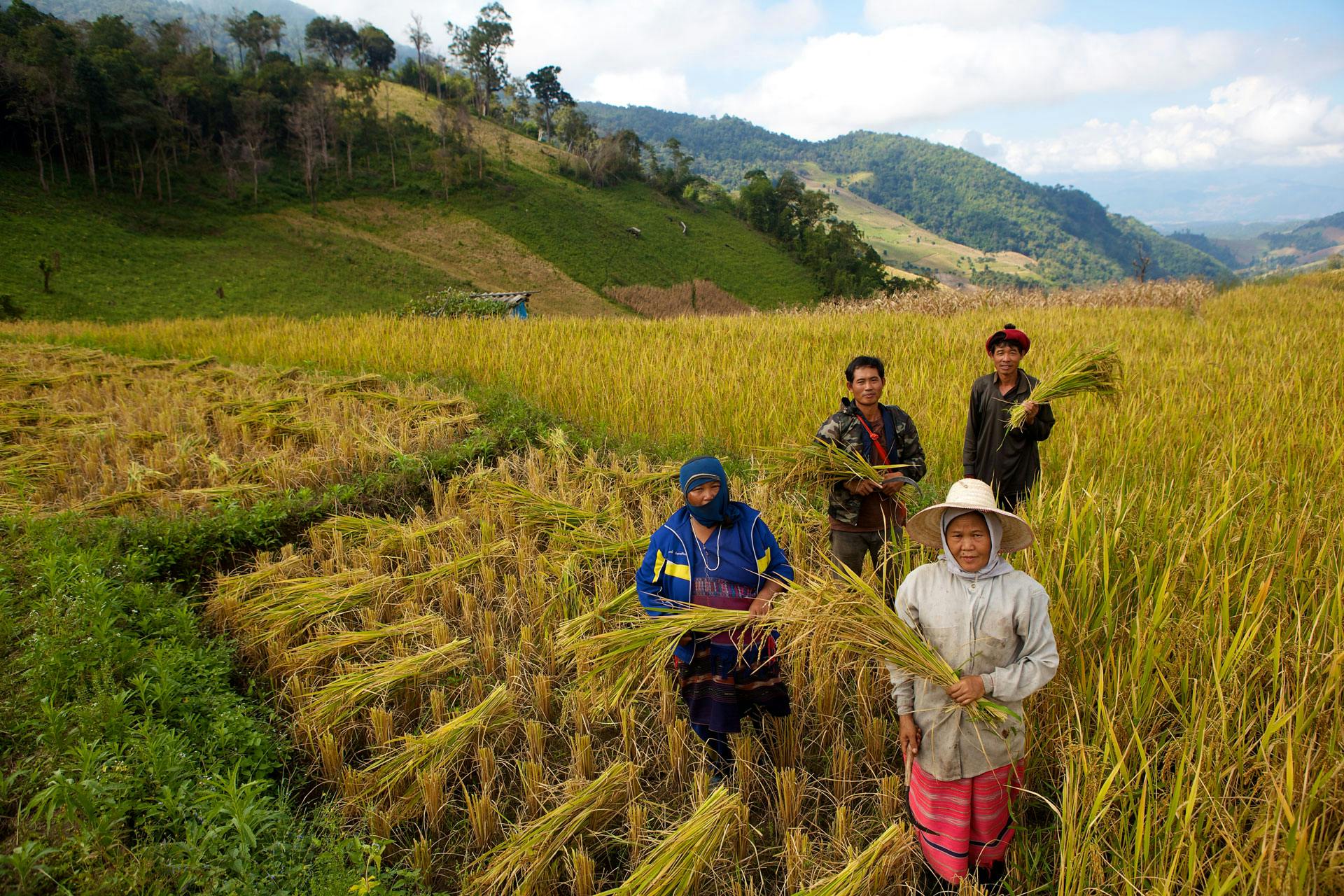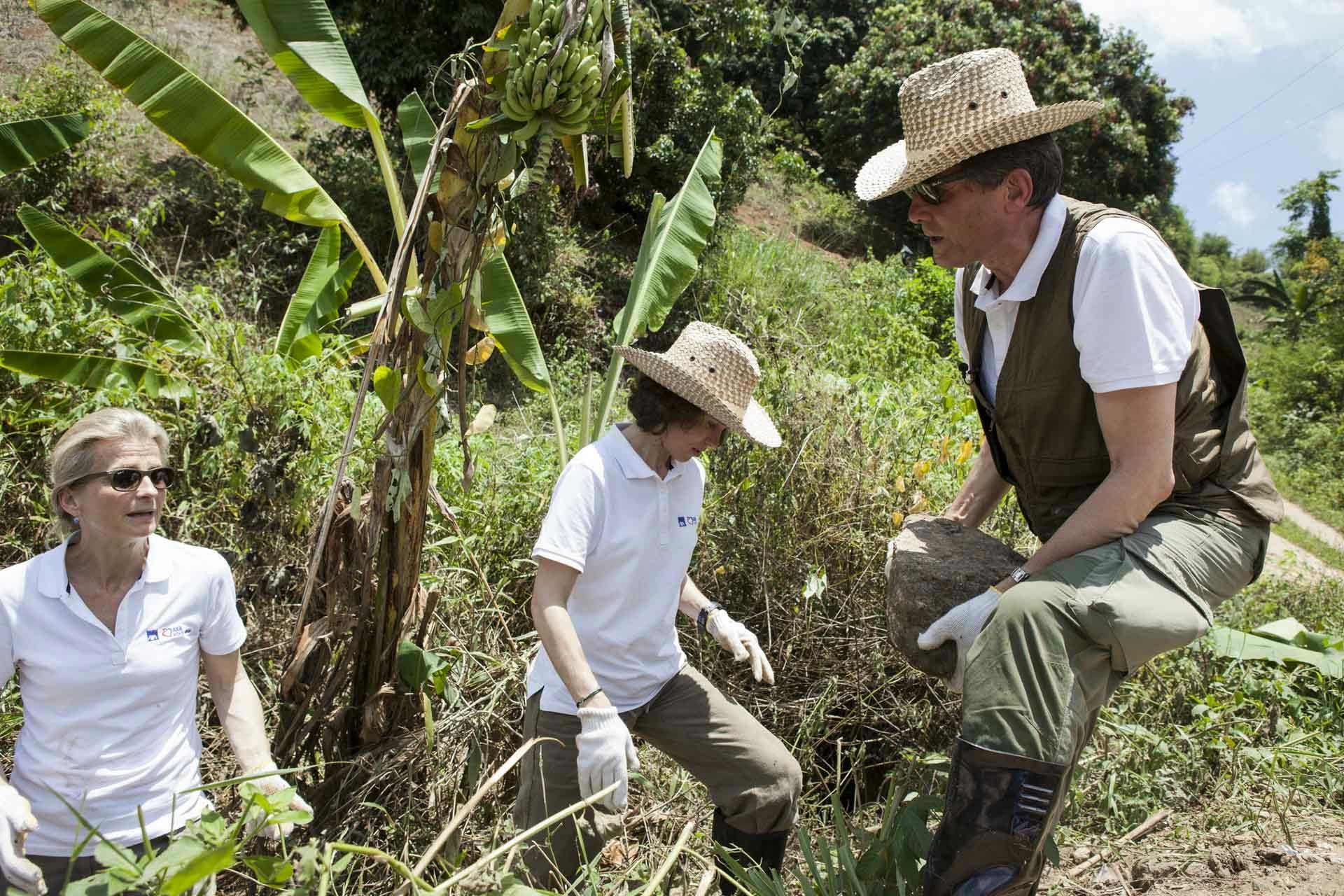
May 19, 2016
Celebrating Five Years With CARE
From India to Tanzania, from Peru to Thailand, our partnership with the NGO CARE has contributed to helping over two million people in vulnerable communities around the world adapt to risks associated with climate change.
5 minutes
Type corporate
into a search engine and one of the top suggestions you’ll get is likely to be corporate social responsibility
. It’s on the tip of our collective tongues. So why is CR often treated solely as a conscience-building exercise, rather than as a strategic priority?
AXA’s response to corporate responsibility.
AXA has been busy integrating CR into its operations across the organization for quite some time. Alice Steenland, AXA’s Chief Corporate Responsibility Officer, meets frequently with top management and the Board, and reports directly to the Executive Committee member in charge of Strategy, Sustainability, and Public Affairs. And the CR team is located on the same floor of the company’s headquarters as the Group Strategy team, encouraging even closer collaboration between the teams.
Though insurance is often seen as a something virtual
(mainly to do with concepts such as assets, liabilities, risk calculations, claims, premiums, etc.), far from the domain of corporate responsibility, CEO Henri de Castries had this to say at Sciences Po (The Paris Institute of Political Studies) while discussing climate change, ahead of COP 21:

Henri de Castries
Chairman & Chief Executive Officer of AXA (2000-2016)
It’s a business which is totally embedded in our social and economic life… an excellent point of observation of the major changes going on in the world, and a place where you can shape or influence many things.
The company’s CR program covers a wide range of issues spanning from responsible investment to managing the Group’s high level Stakeholder Advisory Panel. It also includes employee volunteering (via international solidarity organization AXA Hearts in Action, where tens of thousands of employees volunteer for charity projects around the world), scientific endowments through the AXA Research Fund, and, since 2011, a partnership with the international humanitarian NGO, CARE.

Members of a community helped by AXA and CARE in Northern Thailand.
Why CARE?
In 2010, [AXA] adopted a flagship theme: risk research and education,
explains Amandine Soulier, Head of SRI (Socially Responsible Investing) Relations, Each subsidiary had the freedom to choose local initiatives consistent with local needs.
This meant collaborating with partners locally, and an impact limited to a specific area. Though good things were getting done, it was mostly at the national or community level.


It was time to establish a worldwide CSR mission and program that would leverage the group’s hefty global resources to help solve pressing issues affecting people around the world. And so the flagship theme was evolved to focus on risks arising from global climate change.
And the search for an appropriate global NGO began.
Anne Laroche, Corporate Responsibility Officer with the Group’s Strategy, Sustainability and Public Affairs team, explains that AXA needed an NGO that could help us engage globally, with all our entities, in different areas in different countries…
and one that could engage AXA employees around the world as well.
Based on qualities such as good governance, professionalism, a positive reputation and a focus on transparency, several NGOs were shortlisted for collaboration in November 2010.
CARE was one of a few [NGOs] that could provide expertise on climate risk prevention… and it had the advantage of being more open, not just involved in the environment, more of a people protector.
Anne concludes.
Amandine agrees: CARE proposed a win-win partnership… They didn’t create a need, they had their own, and it matched our expectations, knowledge and expertise.
Going Where The Rain Falls
.
And so began a fruitful new relationship.
Active in 90 countries worldwide, CARE was the ideal partner for a truly global effort. Set up for an initial three years, and currently on its sixth, the partnership’s ongoing goal is to promote risk prevention and education in social, financial and environmental fields to help vulnerable populations better prepare for climate-related risks.
The first main collaboration was on Where The Rain Falls
, a multi-disciplinary research study exploring the interrelationships between rainfall variability, food and livelihood security, and human mobility in eight countries across Asia, Africa and South America.
Valuable insights gained during that study led to the creation of four community-based adaptation projects in Peru, Tanzania, India and Thailand. Focusing on agriculture, the role of women and climate change, the success of these projects, along with others in disaster risk reduction and humanitarian aid, led to the renewal of the partnership in 2014 for three more years.
Starting at the top.
Mathias Faizand, Partnerships Manager at CARE France, had this to say about AXA. What was interesting at the time of renewal… CARE had different projects and needs, including co-financed projects, by the EU and other institutional donors, and AXA understood this need.
AXA supports dedicated Community Based Adaptation projects on Climate Change and is also very happy to co-invest on CARE projects funded by institututional donors, as long as efforts truly help the target community. Mathias claims the company is really involved in a deeper and wider partnership…
and nowhere is this more visible than with direct involvement from top management, not just in the making of strategic decisions, but in actually being present on the ground.
In May 2015, AXA Chairman and CEO Henri de Castries accompanied CARE France Director Philippe Lévêque on a trip to Northern Thailand to visit a CARE community water management project active since 2011, the year the partnership began.
Witnessing the work first hand, Henri de Castries summarizes his thoughts about the partnership and CARE: It’s a highly respected NGO… on the ground for decades, and their knowledge is important.
He continues: We help our clients be more aware about the risks they take… and with CARE we can help people who have significant disadvantages or are in particularly exposed countries, to face the risks of the future better.


Strength through giving in numbers.
And it’s not only about top management. The partnership relies on AXA employees around the world to pitch in on an ongoing basis.
During the yearly AXA Corporate Responsibility week, employees are involved in many of CARE’s activities. For the June 2015 edition of CR week, a contest was launched where employees had to snap a selfie of themselves taking action to protect the environment, and post it on a dedicated platform entitling them to vote for one of the projects led by CARE.
This challenge enabled AXA to complete funding for two additional programs: one in India and another in Madagascar, with winners getting to visit the site of the project funded in India (see a summary of their experiences here). Mathias adds that he is sure CARE can count on AXA to support us… [from] the Ebola virus in Liberia, to events in Nepal, to the Syrian refugee crisis.
Funding comes directly from the AXA Group, but many donations come in directly from AXA employees, and sometimes donations made by employees are even matched by the Group or by individual AXA entities, depending on the project.
The partnership that includes everyone, even you.
And the AXA-CARE partnership doesn’t stop with employees either.
Via the AXA People Protectors page on Facebook, customers and the public at large get involved as well.
In 2011, everyone pulled together to help protect a community of more than 90,000 in Thanh Hoa, Vietnam, by collectively planting a mangrove barrier that reduces negative effects of wind and waves in a region already severely affected by natural disasters.
For every like
received on Facebook, AXA and CARE planted one mangrove as part of the barrier, leading to over 80 hectares planted in total.


AXA and CARE in the future.
And with the 2016 AXA Corporate Responsibility Week kicking off soon, even more will be done with CARE.
Hopefully there will come a day when partnerships to help vulnerable people won’t actually be necessary anymore. But until then, through support for organizations such as CARE, AXA will help provide communities around the world with the same thing it offers its customers on a daily basis: protection.



